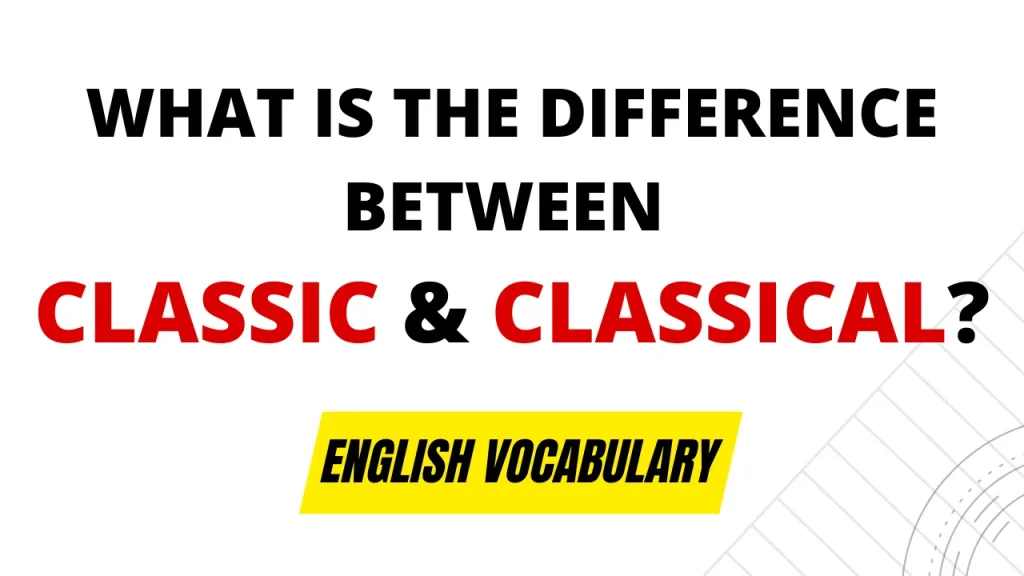
The English language is rich with words that often have subtle differences in meaning, leading to confusion and misinterpretation. Two such terms that are commonly misunderstood are “classic” and “classical.” While they share a common root and are related to the concept of excellence and timelessness, they have distinct nuances in their usage and connotations. In this article, we will delve into the differences between “classic” and “classical” to shed light on their proper usage and help clarify any confusion.
Defining “Classic”:
The term “classic” primarily serves as an adjective to describe something that achieves a high level of quality, enduring appeal, or exemplary characteristics. It denotes works, objects, or ideas widely recognized, respected, and considered to be of outstanding merit.
A classic can be a book, film, piece of art, or any other creation that has withstood the test of time and remains influential or relevant across generations. For example, “To Kill a Mockingbird” by Harper Lee is widely regarded as a classic of American literature.
“Classic” can also refer to a style or design that is timeless, elegant, and never goes out of fashion. Classic fashion, classic cars, or classic architecture are all examples of enduring styles that have retained their appeal throughout the years.
Defining “Classical”:
On the other hand, “classical” derives from the word “classics” and describes things associated with the classical period of ancient Greece and Rome. It often appears in discussions of art, literature, music, and architecture, referring to works reflecting the aesthetic principles and ideals of those ancient civilizations. Classical art often emphasizes symmetry, harmony, and balance, while classical music typically refers to compositions from the 18th and 19th centuries, following a specific structure and style.
“Classical” can also describe an established and traditional approach or method in any field of study or discipline. For instance, classical physics refers to the principles and laws established by Isaac Newton and others before the advent of quantum mechanics.
Key Differences:
- Historical Context: The term “classic” generally refers to something timeless and outstanding, regardless of its historical period, whereas “classical” specifically relates to the ancient Greco-Roman period or its influence.
- Timelessness vs. Historical Association: “Classic” emphasizes enduring qualities and longevity, while “classical” emphasizes a connection to a specific historical era.
- In broad usage, “Classic”: applies across a wide range of domains, including literature, art, fashion, and more, while “classical” primarily focuses on art, music, literature, and architecture.
- Subjective vs. Objective: The classification of something as a “classic” is often subjective and based on popular opinion, while “classical” refers to a more defined and recognized style or period.
Conclusion:
Although “classic” and “classical” share a common root and are related to concepts of excellence and timelessness, they have distinct meanings and usage. While “classic” denotes something of timeless quality and enduring appeal, “classical” specifically refers to the ancient Greco-Roman period or its influence on art, music, literature, and architecture. Understanding the subtle differences between these terms will help ensure accurate and precise communication in various contexts.
Grateful to share this knowledge with us.
I appreciate your support. Thank you.